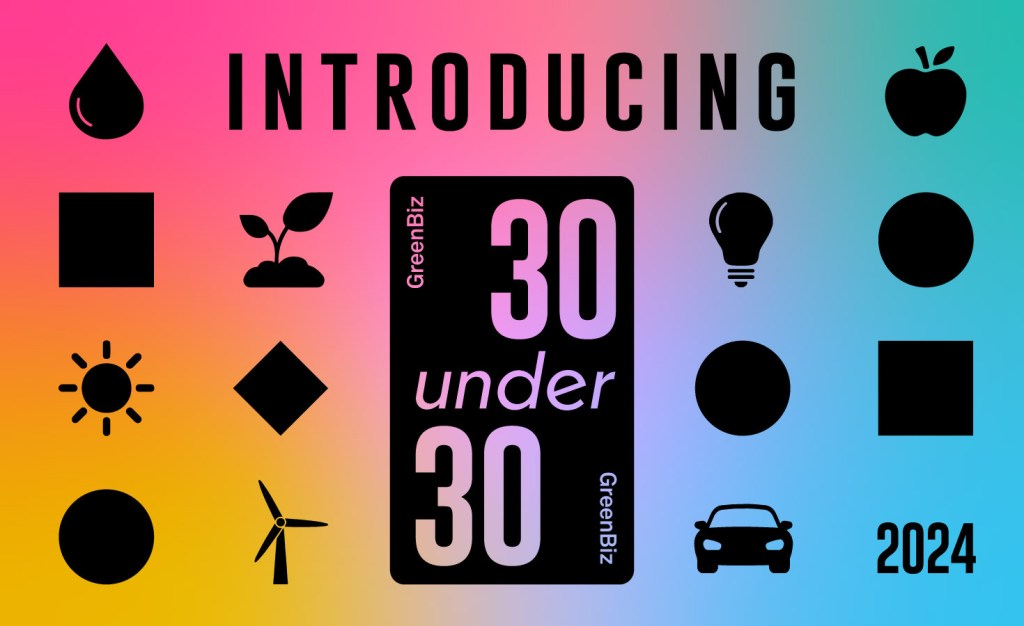Take a factory tour of the $350 million fast-fashion brand making surprising sustainability gains
Reformation's executives call themselves a walking contradiction by combining rapid creations with an industry-leading phaseout of virgin synthetics. Read More
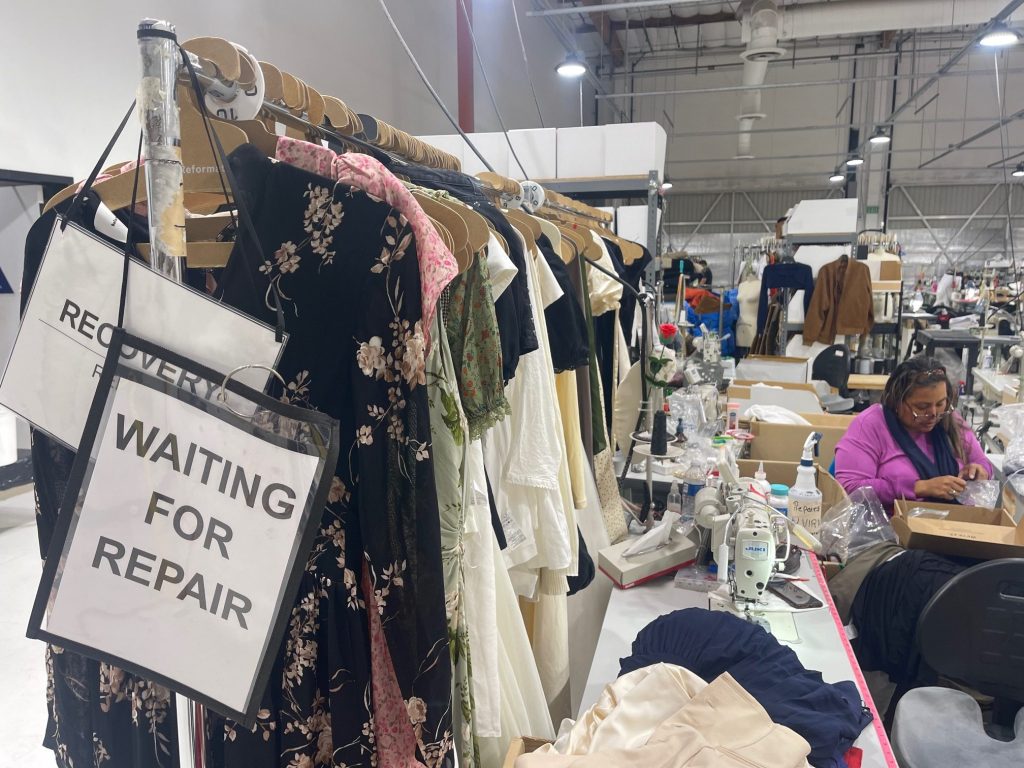
The factory town of Vernon, California, population 222, is where 55,000 people come to work every day. Low-rise plants for snack brands, chemical producers and apparel companies pack its 5.2 square miles. Among them is the nerve center of clothing maker Reformation, which has defined its brand as a foil to the fashion-industrial complex.
Inside, a lobby wall stencil spells out a cheeky take on circular fashion: “Being naked is the No. 1 most sustainable option. We’re No. 2.” Phasing out virgin materials, especially petroleum-based synthetics, is central to Reformation’s mission-driven approach to crafting trendy clothes.
“We believe the future of fashion is circular,” the company’s 2023 circular design guide states. “That’s why we’re committed to losing our virginity by 2030.”
Privately held Reformation said it surpassed $350 million in revenue in 2023, the last time it disclosed financials. It’s been more than 14 years since founder Yael Aflalo opened her vintage boutique 40 minutes to the north of Vernon, on Melrose Avenue in Los Angeles. The mostly direct-to-consumer brand now runs more than 50 stores globally.
Reformation walks a fine line between two seeming enemies, fast fashion and the concept of a circular economy. The fashion business is contaminating the planet, as well as human lungs and bloodstreams, with polyester microplastics. Sustainability advocates are pushing hard for circular business models to prevent the unhappy endings of the industry’s rapacious taking, making and wasting.

“We’re a walking contradiction,” Reformation’s Chief Sustainability Officer and Vice President of Operations Kathleen Talbot told Trellis. During an hour-long walk through the factory Nov. 26, she revealed how Reformation leans into elements of fast fashion planning while it strives to source, sew and repair its way toward a 2030 goal of full circularity.
The apparel industry needs to resolve its competing priorities of growth and sustainability, according to a Dec. 3 report, “Reimagining Growth” by the nonprofit Textile Exchange. As an individual business, Reformation is embracing many of the report’s suggestions, including avoiding virgin fossil fuel synthetics, using machine learning to prevent overproduction, and using circular business models.
Despite an uptick in emissions in 2023, Talbot said the company is on track to reach its 2030 science-based targets, which include reducing emissions for Scopes 1 and 2 by 42 percent and for Scope 3 by 48 percent over a 2021 base year. It’s also sharing, step by step, how by 2025 it plans to become “climate positive,” removing more greenhouse gases than it emits.
Tackling the embedded emissions of materials — almost 60 percent of its greenhouse gas footprint — and advancing recycling and reuse is essential for these targets. Reformation assigns an “A” through “E” letter grade for textiles. It’s phasing out silk and cashmere, which makes up more than half the carbon footprint of its materials despite appearing in less than 1 percent of products.
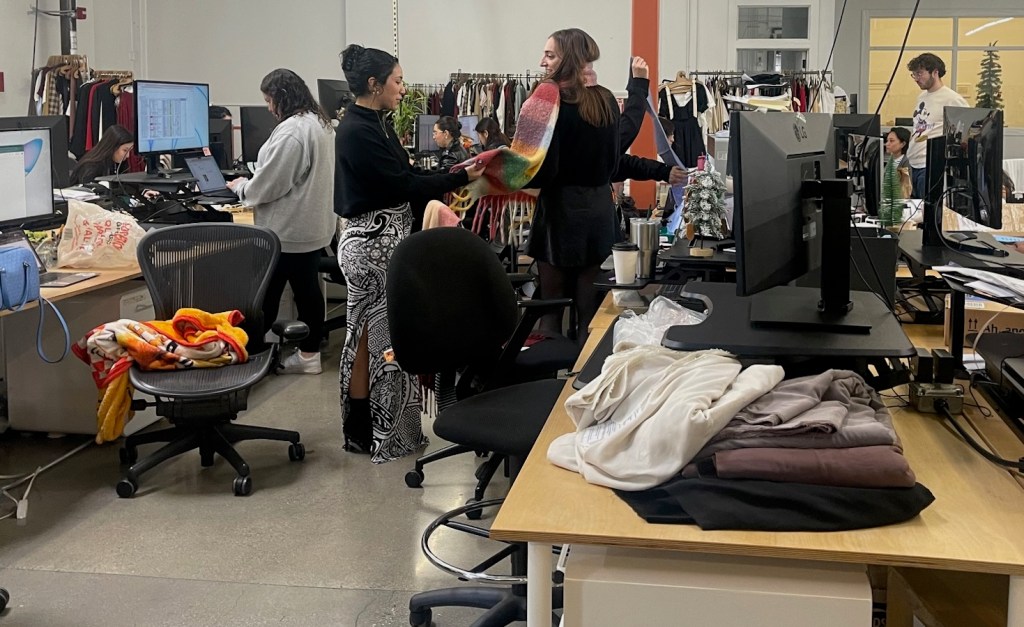
How Reformation is fast
Apparel makers overproduced up to 5 billion items in 2023, according to the McKinsey State of Fashion 2025 report. That means nearly one-third of clothing made never landed in someone’s closet.
Reformation, however, has an “unmatched” sell-through rate of 80 percent at full price, according to Talbot. “The driving factor for that was when we got started was, how do we have as much agility as possible?” she said. Unlike the industry’s typical 12 to 18 months of lead time to forecast trends and purchase accordingly, Reformation issues two collections per week. It might make a first several hundred copies of a garment, or just 50. If sales click, it dials up production.
“It makes the case for a profitable, solid business model,” Talbot said. “But also from a sustainability perspective, it means that we’re hopefully not contributing, or contributing very minimally, to that kind of glut of inventory.” “Good old merchandising and planning models” a unique supply chain structure while AI-enabled planning software also helps, she added.
The company creates and delivers 75 percent of its products in less than 75 days. But it also cranks up to “super fast” pace if a piece goes viral. In 2022, Jennifer Lopez wore its “Tagliatelle” linen dress on her Paris honeymoon. “We were able to make more of this linen dress in two weeks, 10 days in our own factory … and take advantage of that moment,” Talbot said.
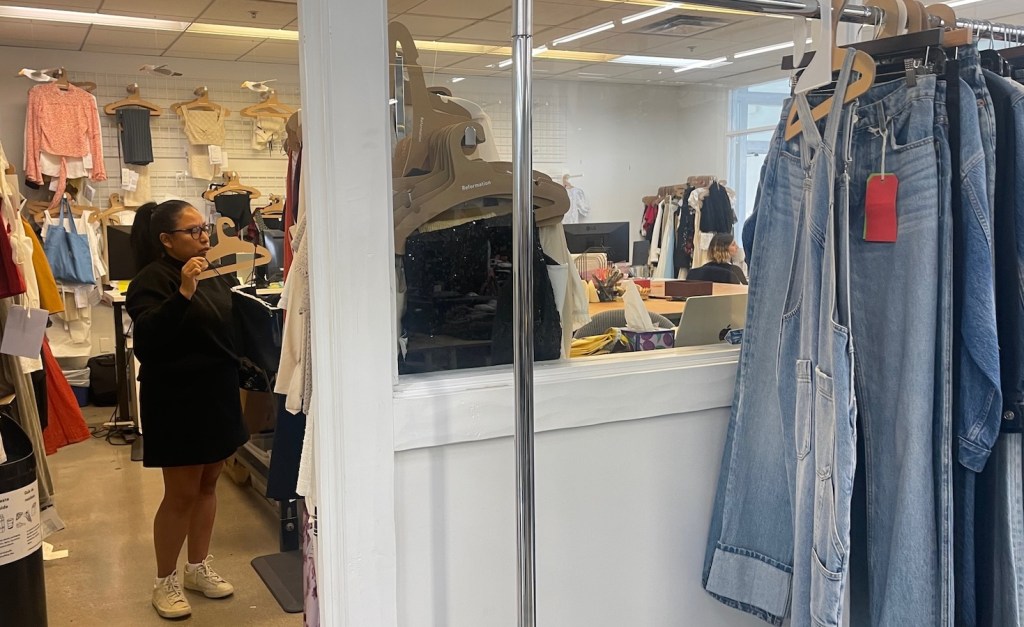
Another tweak on standard industry practice: “We source our materials up front and then make our design teams design into them,” Talbot said. Typically, a brand might tell a factory, “Here’s what we want to make — go make it,’” she said.
Instead, Reformation tells a factory what style to make, and then spells out which materials to procure directly from a specific mill’s inventory. “They don’t get to just go out and source whatever cotton they want,” Talbot said. “They’re sourcing Reformation’s regenerative cotton, they’re sourcing our preferred viscose, or any of our specialty fabrics.”
How Reformation is circular
The textile industry is less than 1 percent “circular,” according to the Global Circularity Gap Report Textiles, published Nov. 28 by the Circle Economy Foundation of Amsterdam. The sector’s .3 rate of recycling or reuse of materials is far below the average of 7.2 percent for all industries.
Reformation, however, departs from these averages, according to its 2023 sustainability report:
- Last year, 97 of the company’s materials were “recycled, regenerative, or renewable.”
- That includes 26 percent non-virgin materials, such as deadstock, recycled and “next-gen” innovations, such as Circulose.
- Reformation only uses 2.5 percent synthetic fibers. By 2030, the goal is to use none.
- Beyond selling new items, resale, vintage and rental accounted for 17 percent of business in 2023.
“There’s so much coming, there’s so much happening,” Talbot said of emerging textile recycling technologies. “It’s going to be hard to know the winner. It’s still too soon to know how this will net out from an impact perspective too, because obviously you don’t want to brush over the fact that there are water, chemical and energy inputs into some of this process. But I think early indicators and directional indicators show that this is really promising and should be a way to reduce our industry’s reliance on virgin inputs.”
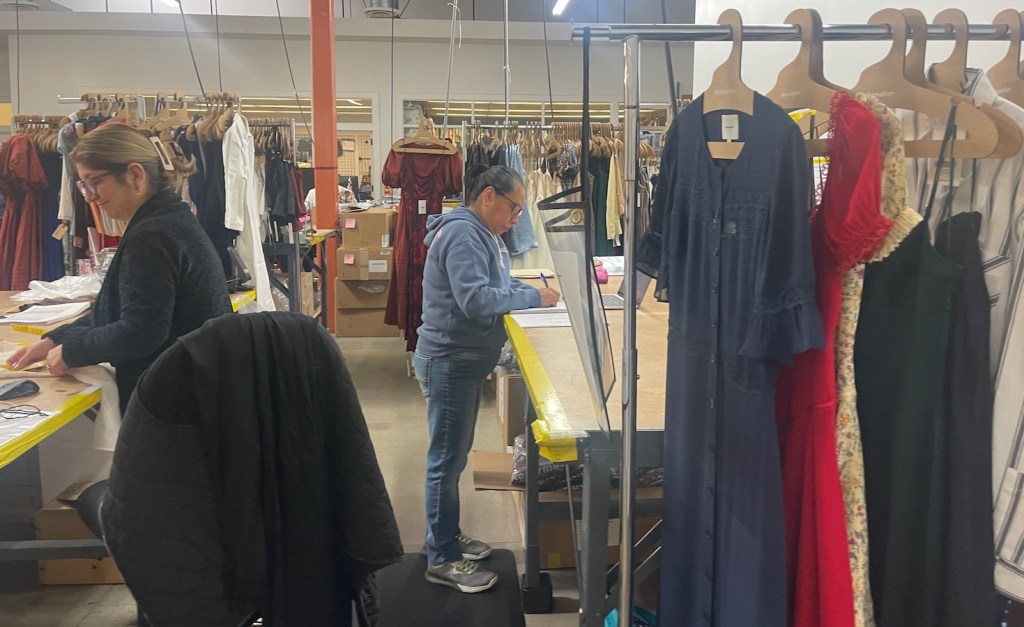
Reformation is embracing “next-generation” materials new to the industry. In 2023, it introduced MWool, 70 percent recycled wool. It also started using Eastman’s Naia Renew, a cellulosic fiber comprising sustainable wood pulp and waste.
And although textile-to-textile startup Renewcell went bankrupt in February, its recycled Circulose material will feature in Reformation’s clothes in January. “It wouldn’t be just a capsule collection, but the potential to displace a really meaningful amount of our existing both silk and viscose,” Talbot said.
Reformation also has numerous efforts to keep products and materials in use. For example, according to the company:
- Reformation is continuing a partnership with Reverse Resources to evaluate how to better recycle factory scrap, which can represent up to 20 percent of each roll of fabric.
- The RefRecycling program gives customers credit for mailing in unwanted items. Through a partnership with SuperCircle, it has diverted 3,500 pounds of items from landfills since 2022.
- Customers get credit for reselling Reformation products through ThredUp, which resold or recycled some 332,703 of the brand’s products in 2023.
- Custom alterations through partner Hemster managed more than 1,000 Reformation items in 2023.
- Expanding scrap recycling and resale could further shrink the materials footprint by between 11 to 23 percent.
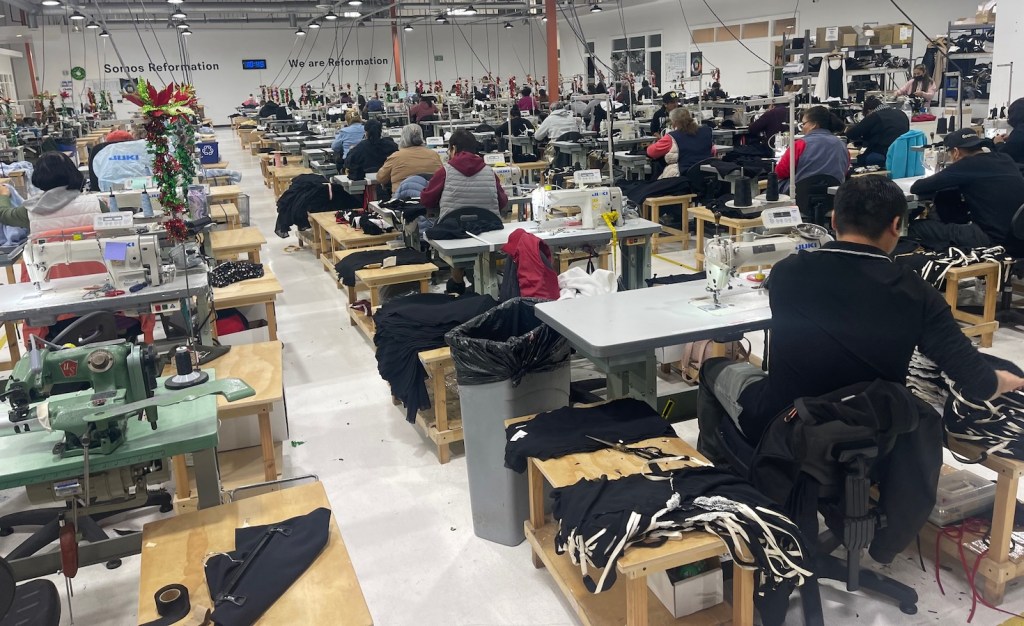
Industry transformation
“I think we will fundamentally change some of the material flows, and (will) be having brands and retailers talking about their feedstock strategies,” Talbot said. People at other fashion companies have told Talbot that Reformation’s sustainability reports, produced quarterly, have inspired them.
Apparel makers need to take a holistic approach, making high-quality products meant to be worn and resold, with preferred materials and positive labor conditions, she added.
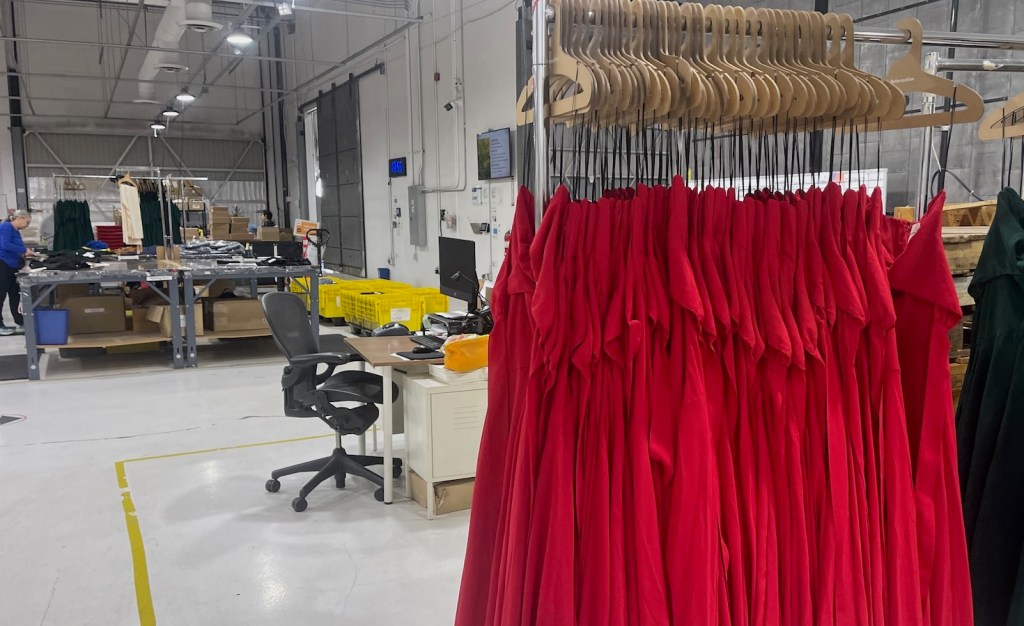
“From a business model perspective, we could all be a lot more reactive, responsive. We have the tools to do this in a much frankly, smarter way. If you demonize fast fashion too much, or make that a dirty word for some of these elements, I think that’s a mistake … There is a place for some of this business model transformation and hopefully Reformation can be a good counterpoint to say how you could use some of these models in a responsible way.”
This summer, Reformation joined H&M and six other brands in the Fashion ReModel project by the Ellen Macarthur Foundation. They’re exploring how to “make money without making more clothes.”
Can fast fashion really be circular?
“Reformation’s transparency and commitment to innovation are steps in the right direction for sure,” according to Rodica Murphy, founder of a London-based sustainability consultancy to apparel companies. “However, it cannot be a standalone practice within their business model.”
“I value Reformation’s candor, aspirations and progress,” said Ken Pucker, a former chief operating officer at Timberland who often criticizes the fashion industry’s lack of sustainability progress. “The company openly shares its successes and failures and develops partnerships to advance its goals.”
Reformation’s leadership includes advocating for systems change, including supporting policies such as the New York Fashion Act, he added.
[Connect with the circular fashion community and gain insights to accelerate the shift to a circular economy at Circularity, April 29-May 1, Denver, CO.]








